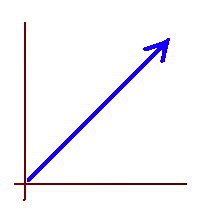One instance where often “less is more.”
The following question is an excellent guideline for solving math word problems:
“How can I solve this problem by doing the least possible amount of math?”
Oftentimes there are several pathways from the setting of a problem to its final solution. Some routes are safer, while some are riskier, more error-prone. Some routes are faster, while some are time-consuming. Some routes are clearer, while some may be confusing.
Usually, the routes with more elementary operations (especially long division), and bigger numbers, tend to be lengthier, longer, and riskier, because adding, multiplying, and dividing big numbers or expressions requires a laser-focus attention. There are plenty of opportunities for doing silly mistakes during these calculations. Besides, it is easy to lose sight of the big picture when worrying about the accuracy of the calculations.
Factoring whole numbers and algebraic expressions is a good habit because it allows you to simplify some expressions before diving into the calculations, so you can operate with smaller numbers, gaining time, and accuracy.
Using logic is a very good habit, too. Many problems lend themselves to solutions that involve more reasoning, and less calculation. This is usually a good thing because these solutions tend to be clearer, and shorter.
Organizing all the information about a problem in a way that makes sense to you, is an excellent habit because this way you keep track of where you are and what you are doing all the time through the problem, and having all these references available makes it easy to retrace your steps, and identify any possible mistakes.
Go visual at any opportunity. Pictures, drawings, charts, graphs, and tables often are a huge help in writing down the right equations, or even in avoiding equations altogether sometimes.
There are many problems you can solve with a drawing and a little logic. Just because the problem is a math problem, that does not mean you need to write down an equation to solve it.
Focus on your possibilities, on what you can do. Organize the information in a logical way, using a drawing, or a table. Above all, try to spend the least possible amount of time and energy doing long, detailed, time-consuming calculations. Instead, simplify the expressions, and ask yourself logical questions about the problem.
Monero subaddresses
-
Monero has a way of generating new addresses analogous to the way HD
wallets generate new addresses for Bitcoin. In both cases, the recipient’s
software ...
11 hours ago




